
39 minute read
2 3
What is development?
Development is an improvement in living standards through better use of resources.
Advertisement
Economic - This is progress in economic growth through levels of industrialisation and use of technology.
Social - This is an improvement in people’s standard of living. For example, clean water and electricity.
Environmental - This involves advances in the management and protection of the environment.
Population Pyramids
The population pyramid represents the breakdown of the population by gender and age at a given point in time. It consists of two histograms, one for each gender (by convention, men on the left and women on the right) where the numbers are shown horizontally and the ages vertically.
The Demographic Transition Model

Variations in the level of development
• LICs - Poorest countries in the world. GNI per capita is low and most citizens have a low standard of living. • NEEs - These countries are getting richer as their economy is progressing from the primary industry to the secondary industry. Greater exports leads to better wages. • HICs - These countries are wealthy with a high GNI per capita and standards of living. These countries can spend money on services.
The demographic transition model (DTM) shows population change over time. It studies how birth rate and death rate affect the total population of a country.

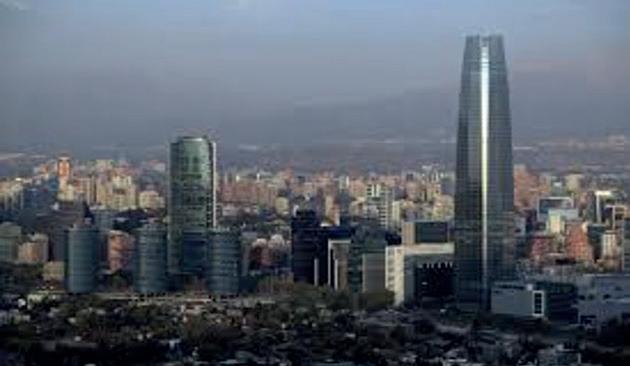

STAGE 1
High DR High BR Steady
e.g. Tribes
STAGE 2
BR Low Declining DR Very High
e.g. Kenya
STAGE 3
Rapidly falling DR Low BR High
e.g. India
STAGE 4
Low DR Low BR Zero
e.g. UK
STAGE 5
Slowly Falling DR Low BR

Negative
e.g. Japan
Measuring development These are used to compare and understand a country’s level of development.
Economic indicators examples
• Gross Domestic Product per capita - This is the total value of goods and services produced in a country per person, per year. • Gross National Income per capita - An average of gross national income per person, per year in US dollars.
Social indicators examples
• Infant mortality - The number of children who die before reaching 1 per 1000 babies born. • Literacy rate - The percentage of population over the age of 15 who can read and write. • Life expectancy - The average lifespan of someone born in that country.
Mixed indicators
• Human Development Index (HDI) - A number that uses life expectancy, education level and income per person.
Sectors of Production
Primary Sector: The part of the economy that grows or extracts raw materials. Raw materials: An unprocessed, natural product that is often used to manufacture.

Secondary Sector: The part of the economy that is concerned with the manufacturing and processing of goods. They use raw materials from the primary sector either directly or indirectly. Manufacturing: The making of goods on a large scale using machinery. Directly: When raw materials are used directly to make a new product. E.g. coal, iron ore and limestone are used to make steel. Indirectly: The steel is used to make a new product e.g. a car.

Tertiary Sector: The part of the economy that provides services. People may pay directly for a service e.g. paying a private tutor. Alternatively, using money taken indirectly from tax, a government can provide public services e.g. education, health.

Quaternary Sector: The part of the economy that provides information services, such as computing, ICT, consultancy, research and development, and financial services.

Consequences of Uneven Development
Levels of development are different in different countries. This uneven development has consequences for countries, especially in wealth, health and migration.
Wealth - People in more developed countries have higher incomes than less developed countries.
Health - Better healthcare means that people in more developed countries live longer than those in less developed countries.
Migration - If nearby countries have higher levels of development or are secure, people will move to seek better opportunities and standard of living.
Causes of uneven development
Development is globally uneven with most HICs located in Europe, North America and Oceania. Most NEEs are in Asia and South America, whilst most LICs are in Africa. Remember, development can also vary within countries too.
Transnational Corporations
Trans National Corporations (TNCs) are companies that operate globally. They tend to have their headquarters and management in developed countries and other factories around the globe in many different developing countries.
E.g. Nike is from the USA, but has branch factories in Vietnam, Thailand & Cambodia.


Revision Tasks
Compare the differences between HIC’s and LiC’s. Describe the different indicators of development. Sketch a population pyramid for each stage of the DTM. What is the most effective measurement of development and why? Explain why there can be uneven development in some countries. Comment on the 4 sectors of production. Name a country as an example for each sector of production. What are the main consequences of uneven development? Sketch a brainstorm showing the impacts of migration on host countries. Define a TNC. Name 3 TNC’s. What are the advantages and disadvantages of TNC’s? Create questions (with answers) using the words to the right about this unit of work.
Define
Who
What
Where
When
How Key Terms
Development
Variations
Gross Domestic Product per capita
Gross National Income per capita
Infant mortality
Literacy rate
Life expectancy
Human Development Index (HDI)
Demographic
Transition
Model
Population
Pyramids
Primary sector
Secondary
Sector
Tertiary
Sector
Quaternary
Sector
Wealth
Health
Migration
TNC
Uneven
Location & Biomes
Grasslands


Desert
Tundra

Famous Places and Landmarks


Taiga

Tropical Rainforest

Deciduous Forest

Mount Everest, Great Wall of China, Taj Mahal India, Red Square Moscow, Gardens by the Bay Singapore.

Climate Graphs


Tropical Rainforest


Tundra
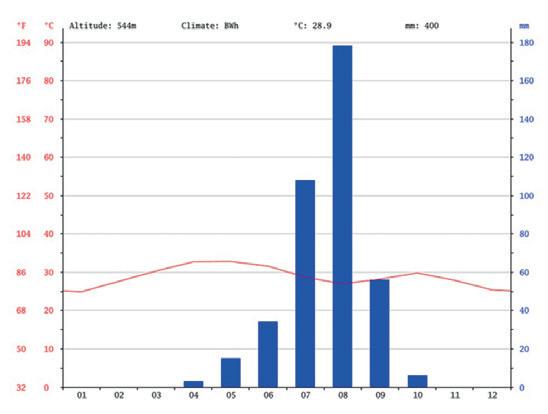
Desert

Map of Asia
East Asia Region

Life Expectancy (The no. of years a person can expect to live) GDP ($) Gross Domestic Product (A measure of the value of goods and services a country produces) GDP per capita (GDP / person, divided by population) Literacy Rate (% of people who can read and write aged 15yrs or older) Employment Structure: Agriculture (% people who work in farming) Employment Structure: Industry (% people who work in manufacturing) Employment Structure: Services (% people who work providing services) Urban Population
Japan 84.67 years $5.18 Trillion $39,029 99% 3.38% 24.38% 72.24% 91.8%
China 76.96 years $14.22 Trillion $7,794 96.8% 26.1% 27.6% 46.3% 60.8%
Population Pyramids

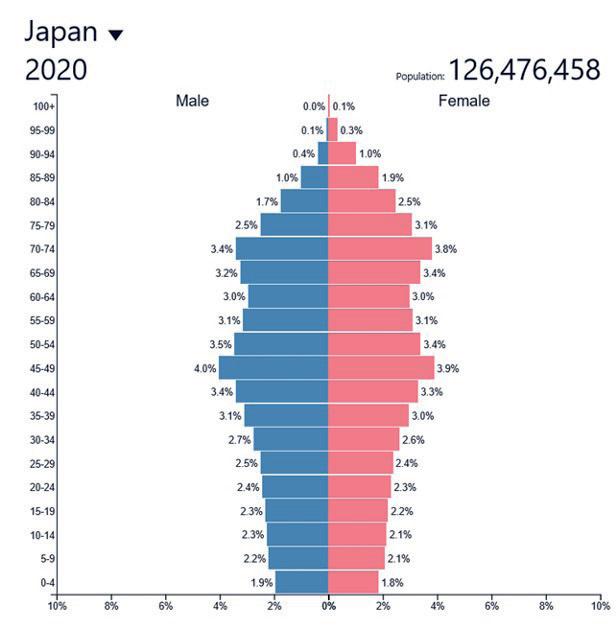
Ageing
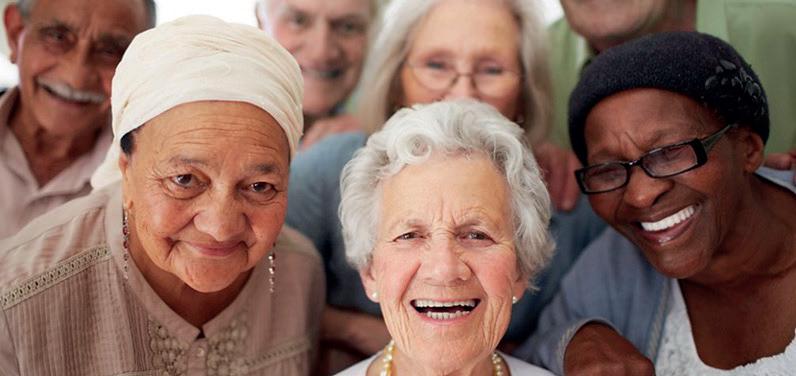
Tourism in The Maldives
The Maldives achieved
NEE status in 2011. Incomes have risen from $400 in 1950 to around $5000 today
Economic
A modern new luxury terminal has been built to give a great resort experience even before guests reach their hotel.
Socio-economic
Literacy rates have grown from 82% in 1977 to 96% by 2006. Reinvestment of profits into environmental help
Environment
Using the funds they have improved connecting transport and
ferries/boats.
Socio-economic
Maldives wants to be carbon neutral by 2020.
Youthful

Local airlines have expanded.
Socio-economic
Tourists may not respect locals way of life e.g. drinking alcohol and being loud.
Social
Investment has created job opportunities - now 313,900 have state education and healthcare benefits. Jobs can often be low paid and seasonal.
Economic
For the smaller islands, they want to encourage e-learning, and to do this they are working on installing a submarine fibre optic internet cable.
Socio-economic
Tourism can disturb animal breeding patterns.
TNCs and Globalisation
How many advantages and disadvantages of TNCs can you identify?
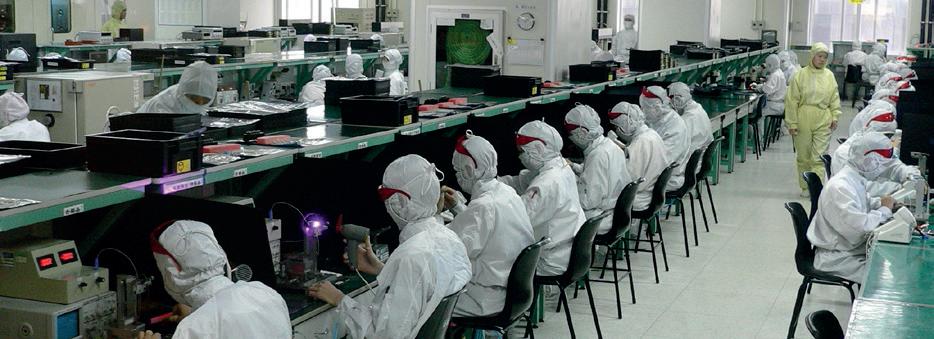
Over half of Apple’s Factories break the rules and have their staff working even harder. The new Apple iPad is made in China at a factory called Foxconn in Shanghai Many other factories in China have the same issues as the Foxconn Factory
Over half of Apple’s Factories break the rules Workers at the factory also have to supply parts to Dell, Nokia and HP. Foxconn also provide workers with accommodation if they need it
As many as 39% of Apple’ s factories do not have proper health and safety in place and many workers get injured Li Hai is 19 years old and has been working at Foxconn for 42 days Workers who sleep at Foxconn have to stay in huge dorms with dozens of beds in them
People assembling the new iPad get paid 30 pence an hour on average Li Hai gets upset and the tiring conditions that he is working under Workers at Foxconn know what an iPad can do but they are unable to buy one themselves
A mouse-maker at an Apple factory must assemble 2,000 mice in one shift
Sometimes the temperature in the factories can be higher than 25 degrees Celsius
The Foxconn factory in Shanghai is so big that it would take you 2 hours to walk around the edge of it Over the past six months, nine people working at Foxconn have committed suicide Li Hai rarely has enough money to enjoy himself on a night out - and he is usually tired in the evening because of the work
Foxconn do have a complaints procedure and staff are allowed to talk to their managers about problems
This year there have been 1,300 people dismissed from Foxconn for failing to follow the rules The parents of Li Hai are elderly and need help from their children for food and shelter.
The man in charge of Li Hai’s department is not particularly nice and is under a lot of pressure to get the parts assembled
Design an Eco-tourism Resort
Water heated by solar power Small number of rooms Expensive to stay there Wind turbines Built near existing roads
Gardens watered only with collected
rain water Nature trail activities Local sourced food and drink served Profits used to train up local guides Guests help out with local conservation projects Employs local, knowledgeable guides
Low rise building Close to airport It is a tented camp
Local people deliver talks Swimming Pool
Built with local materials
Recycles waste
Food is picked locally.
Showers in rooms

Revision Tasks
State 2 differences between weather conditions in a tundra biome and weather conditions in a tropical rainforest. Describe 3 biomes found in Asia. Name 3 countries found in East Asia. Compare the level of development in China and Japan. How do population Pyramids differ between L.I.C.s and H.I.C.s? What are the implications of a youthful population? How would you tackle the problems of an ageing population? Explain the terms Trans National Corporation and Globalisation. Explain the advantages and disadvantages that TNCs bring to host countries like China. What are the advantages and disadvantages of Tourism in developing countries like The Maldives? Can you categorise them into social / economic and environmental? What features would you include in an Eco-Tourist Resort in an N.E.E. or L.I.C? Create questions (with answers) using the words to the right about this unit of work.
Define
Who
What
Where
When
How
Describe Key Terms
Biome Desert Tropical Rainforest Grasslands Taiga Tundra Deciduous Forest Mt. Everest Great Wall of China Mount Fuji Gardens by the Bay, Singapore Taj Mahal, India Red Square, Moscow Life Expectancy Gross Domestic Product Literacy Rate Employment Structure Urban Population Weather and Climate Population Pyramid Ageing Population Youthful Population Trans National Corporation Globalisation Exploit Apple Foxconn Tourism Eco-Tourism
9.1: How significant was the First World War?
Why were there so many casualties during the Battle of the Somme?
Technology
Machine guns were used by both sides which meant it was incredibly dangerous for soldiers and horses.
The British the Vickers machine gun which could fire 450-600 rounds per minute. The Germans had the MG08 which averaged 500 rounds per minute.
Gas was used from 1915 onwards. Mustard gas led to severe swellings and blistering inside/outside the body. It was so toxic that it could cause leather gloves to shrink. Gas masks were difficult to use and often ineffective.
Tactics – creeping barrage
The British used heavy artillery to shell along the German line/barbed wire for 7 days before the attack – the Germans were used to this tactics and saw it as a warning that they would be attacked which meant they hid in support trenches until the attack was over.
The British army then walked towards the German front line en masse which meant many were killed by German machine gun fire.
This tactic had been used throughout the war with little success but was still repeatedly used at the Battle of the Somme.
Leadership – Haig
Haig chose to spread the forces thinly over a very long front (16 miles).
Haig repeatedly used the creeping barrage tactic in the hope of a major breakthrough, but this did not happen.
He was slow to embrace new technology – he had been trained as a cavalry soldier and fought on horseback during the Boer War.


9.1: How significant was the First World War?
Why was British society changed by the First World War?
Housing
The government wanted to improve housing and provide ‘homes for heroes’. A series of Housing Acts meant that by 1921, 214,000 new homes had been built and by 1933 another 500,000. This did not help the poorest in society who could not afford the rents for these houses meaning those living in slum housing did not benefit.
Attitudes in society
Some historians believe the war brought about changes in people’s attitudes. Young people seemed to be less willing to listen to advice from older generations as the war had made them feel more independent. There was anger towards the ‘established elites’ (typically older, wealthy white males) who had misled the people during the war e.g. representing the Battle of the Somme as a victory. Journalists began to write more critically about these people.
Work
The government reduced working hours to a maximum of 8 hours per day. But there was high unemployment as the British economy struggled to readjust to producing commercial goods instead of munitions. In 1921, unemployment was over 20%. In 1923, the government extended National Insurance to 60% of the workforce. This meant most workers were making regular contributions (like a tax) to National Insurance so that if they lost their jobs, they could be provided with payments out of the National Insurance pot to cover part of their wages until they found work. The war was followed by a trade slump around the world. By 1921, 2 million people were unemployed in Britain and employers began to reduce wages. There were particular problems in the coal mining industry which led to a General Strike in 1926.


9.2: Nazi control and persecution
Persecution of the Jews through history
Throughout history Jews have been expelled from different areas and have resettled elsewhere. Jews were exiled from Israel by the Romans in 132AD. This led to the diaspora- the scattering of Jews to different places. Jews were considered by many to be responsible for the death of Christ.
Jews often lived together in a Jewish quarter. Here they would have access to a synagogue, a kosher butcher and other people who shared their beliefs and customs. However, this could also make them isolated from other parts of society.
They were often not trusted and many restrictions were applied to them.
As a minority group, Jews became well adapted to looking after themselves as no one else would. They became doctors, lawyers and other professionals. Their success was often resented by others in society.
Nazi persecution of Jews When the Nazis came to power in 1933 they began to introduce laws which made life difficult for Jewish people.
1933 – Jewish people were not allowed to own businesses. They could not members of sports clubs.
1935 – Jewish people were not allowed to marry non-Jewish people. Jewish people lost the right to be a German citizen.
*Kristallnacht
Throughout history Jews have been expelled from different areas and have resettled elsewhere. Jews were exiled from Israel by the Romans in 132AD. others in society.
Timeline
1933 –The Nazis came to power in Germany 1938 –Germany united with Austria and invaded Czechoslovakia. Kristallnacht. 1939 –Germany invaded Poland and Britain entered the war. Jews were forced to move into ghettos.
Key Words
Concentration camp – Where Jews, and other minority groups, were imprisoned, forced to provide labour and/or murdered.
Death march – In the last months of the war, prisoners from concentration camps were sent on marches across Europe to areas within the German border. Around 250,000 prisoners died on these marches.
Einsatzgruppen – Death squads responsible for mass killings, primarily by shooting, in German-occupied Europe.
Ghetto – Areas within cities which were then ‘sealed’ with fences, checkpoints and guards. They were overcrowded, there was very little food and diseases spread.
Persecution – Hostility and ill-treatment.
1938 – Jewish children were not allowed to go to school with non-Jewish children. Jewish people could not drive a car. Kristallnacht.* 1939 – Jewish people were not allowed to own radios and had to home by 8pm at night. 1941 – Jewish people had to wear a yellow star on their clothes. 1942 – Jewish people could not own pets or buy

newspapers. Jewish children could not go to school. 1941 –Final Solution. Persecution escalated, including mass shooting and concentration camps. 1945 –Death marches and liberation of survivors.
Life in other countries is not always as it is in this one, often in countries around the world it’s citizens don’t have the same rights as us. Spend some time researching the ways in which other countries treat people in their country.
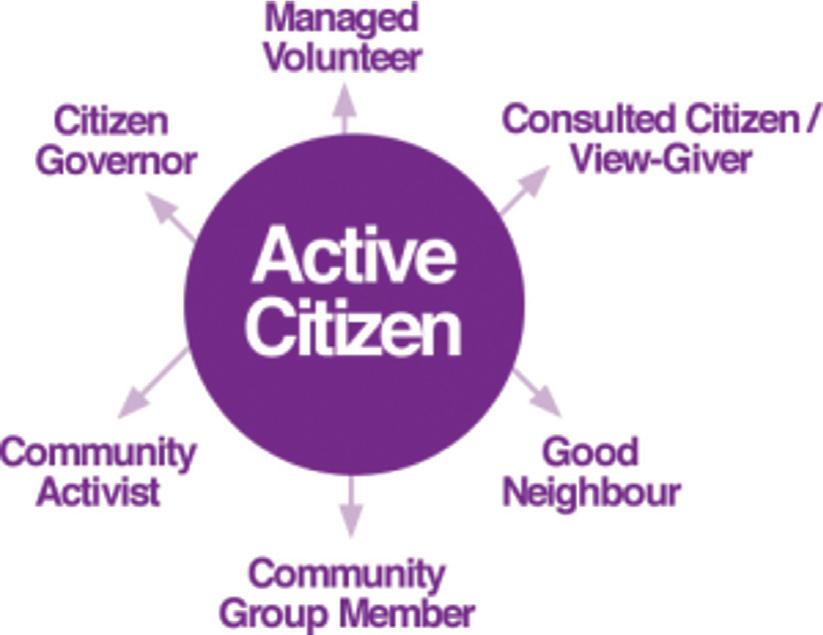
Anarchy Democracy Monarchy Dictatorship
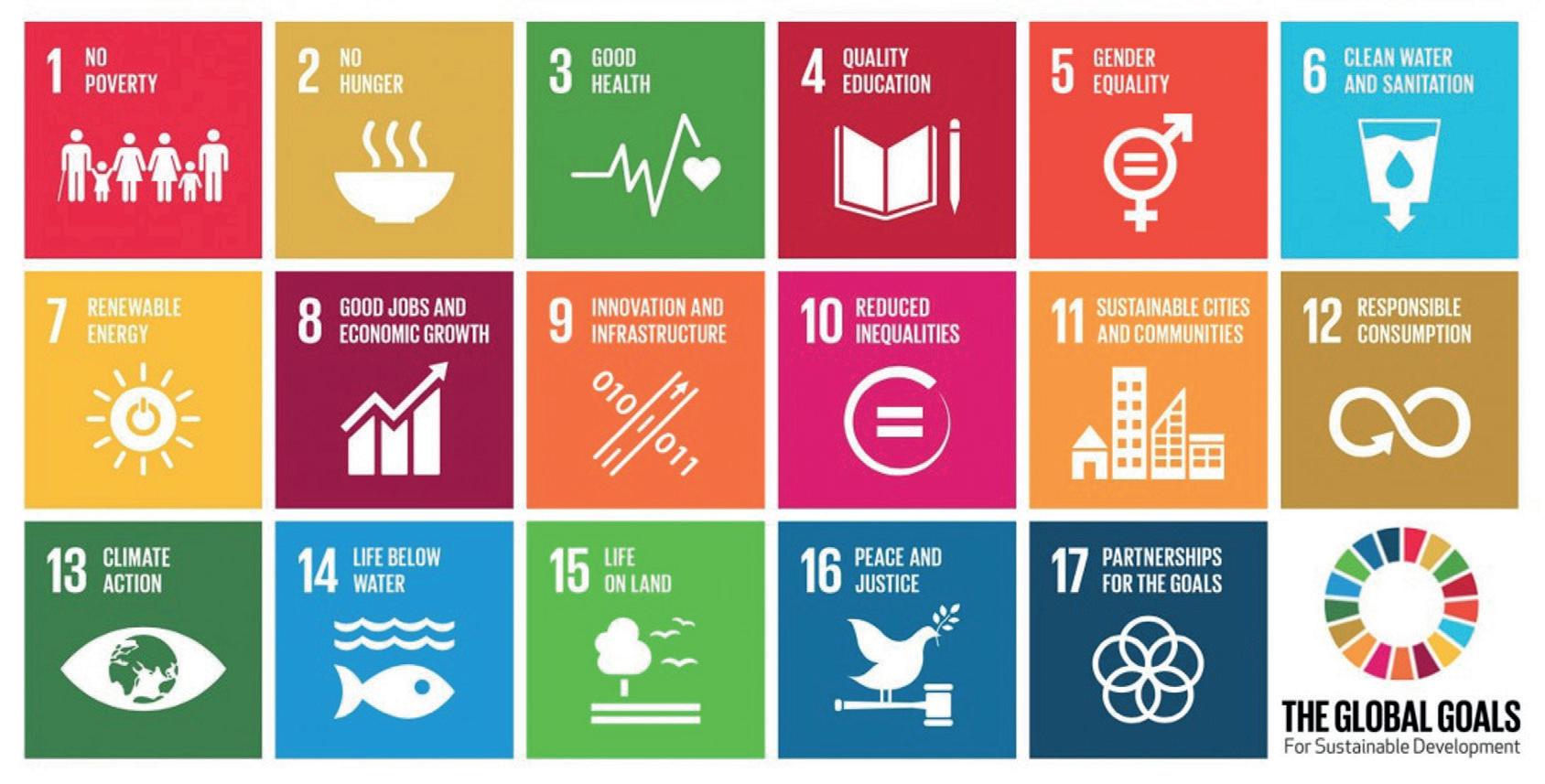
Define: Platonic Relationship
A friendship or relationship where there is no romantic, intimate or sexual feelings. Friends and colleagues.
Define: Intimate Relationship
A relationship which can include a sexual attraction and sexual activity. Boyfriend. Girlfriend, married couples
Define: Familial Relationship
A relationships with someone who has a blood, kinship or legal tie to you. Parents, siblings etc.
Define: Toxic Relationship
A relationship that has a negative impact on your mental health and self esteem.
What makes a good friend?
Good friends make you feel good
Good friends listen
Good friends support each other
Good friends are trustworthy
Good friends handle conflict respectfully and respect boundaries
Friends not followers
Good friends say and do things that make you feel good, giving compliments and congratulations and being happy for you. A good friend allows you to talk and doesn’t interrupt you. They’re interested in what you have to say. If you’re feeling down, a good friend will support you. If you need help, a good friend will try to help you out. If you tell a good friend something private, they won’t share it. You can trust a good friend not to be judgemental. A good friend will tell you if you’ve done something to hurt them. If you tell a good friend they’ve hurt you, they’ll be sorry and won’t do it again. In the digital world you can feel under pressure to have a lot of friends and followers. Remember that you only need a small circle of friends to be happy.
Good friendships go both ways
Signs of a Toxic Friendship
Sometimes people who claim to be your friends can show bullying behaviour. This is sometimes called a ‘frenemy’ but is a type of toxic relationship. You can spot them by:
They might say “brutally honest” things to you which are unkind or hurtful
Put pressure on you to do things you don’t want to do
Be manipulative (e.g. ‘If you were my friend you would…’) Put you down Laugh at you, or encourage others to laugh at you Talk about you behind your back Deliberately exclude you from group chat and activities
Take the “banter” too far
Share things about you online Make you feel bad about yourself
What to do if you are in a toxic friendship
Remember: the problem isn’t you: Hold on to that thought. Their behaviour might make you feel bad, but they need to change, not you.
Talk to them about how their behaviour makes you feel:
Explain calmly and without accusation. Be specific, tell them what you’d like to happen moving forward. Their response will tell you a lot, sometimes our behaviour hurts others without us realising.
If they apologise, give them another chance: If they mean it, they’ll change their behaviour and stop making you feel bad. However, sometimes frenemies might apologise insincerely, and their behaviour afterwards won’t change. If they’re still making you feel bad despite what you’ve told them, it’s time to move on.
Make new friends: Moving on can be scary, but you deserve people in your life who support you and make you feel good about yourself. See our guide to making new friends for help.
Don’t retaliate: It can be tempting to encourage others to exclude your former frenemy, or to put them down behind their back. Don’t do this: you’re only showing the same behaviour you found difficult in them.
Define: Domestic Abuse
Domestic abuse is violence or other abuse by one person against another in a domestic setting, such as in marriage or cohabitation or between siblings.
The Statistics 16 to 19 year old’s had experienced domestic abuse in the past year (2015)
6.6% 12.9%
13 to 17 year old’s who had experienced physical abuse from an intimate partner
18% 25%
13 to 17 year olds reported some form of sexual abuse within their relationships.
Physical
Unexplained and an increase in
Injuries such as: • Black eyes • Busted lips • Red or purple marks on the neck • Sprained wrists • Wearing long sleeves or scarves in • Wearing heavier than normal
Who Can you
16% 31%
Types of Abuse Physical Abuse:
Hitting, slapping, shoving, grabbing, pinching, biting, hair pulling, etc. are types of physical abuse. This type of abuse also includes denying a partner medical care or forcing alcohol and/or drug use upon him or her.
Sexual Abuse:
Coercing or attempting to coerce any sexual contact or behaviour without consent. Sexual abuse includes, but is certainly not limited to, marital rape, attacks on sexual parts of the body, forcing sex after physical violence has occurred, or treating one in a sexually demeaning manner.
Emotional Abuse:
Undermining an individual’s sense of self worth and/or self esteem is abusive. This may include, but is not limited to constant criticism, diminishing one’s abilities, name calling, or damaging one’s relationship with his or her children.
Economic Abuse:
Is defined as making or attempting to make an individual financially dependent by maintaining total control over financial resources, withholding one’s access to money, or forbidding one’s attendance at school or employment.
Psychological Abuse:
Elements of psychological abuse include but are not limited to causing fear by intimidation; threatening physical harm to self, partner, children, or partner’s family or friends; destruction of pets and property; and forcing isolation from
• Bruises on the arms
It’s also common for someone to try to cover up the physical signs with clothing. For example: the hot summer. makeup • Wearing sunglasses inside
Signs of Abuse
Emotional
Domestic abuse, of course, can take a serious emotional toll, creating a sense of helplessness, hopelessness, or despair. Other emotional signs of abuse include: • Low self esteem • Extremely apologetic or meek • Seeming fearful • Changes in sleep habits • Agitation, anxiety, or constant apprehension • Developing a drug or alcohol problem • Symptoms of depression • Loss of interest in daily activities • Talking about or attempting suicide
Social
If you notice that someone who was once outgoing and cheerful has gradually become quiet and withdrawn, it could be a sign of domestic abuse. You may notice that the person: • Is reserved and distant • Drops out of activities they would usually enjoy. • Cancels appointments or meetings with you at the last minute. • Is often late to work or other appointments. • Exhibits excessive privacy concerning their personal life or the person with whom they’re in a relationship. • Begins isolating themselves by cutting off contacts with friends and family members
family, friends, or school and/or work.
turn to for help and Support
Parents or trusted family members and Friends. The Police / Community support officers. School Safe Guarding Team or any member of staff. NSPCC - Helpline: 0808 800 5000 (24 hours, every day) / www.nspcc.org.uk Childline - Helpline: 0800 1111(24 hours, every day) / www.childline.org.uk Women’s Aid - Helpline: 0808 2000 247 24hr / www.womensaid.org.uk Men’s Advice Line - Helpline: 0808 801 0327 Monday - Friday 9am - 5pm / www.mensadviceline.org.uk
Healthy Diet and Exercise
Define: Calories
Calories refer to the energy people get from the food and drink they consume.
Define: Obesity
Obesity has been defined by the National Institutes of Health (the NIH) as a BMI of 30 and above.
Define: BMI
This is a numerical value of your weight in relation to your height. A BMI between 18.5 and 25 kg/m² indicates a normal weight. BMI is a person’s weight in kilograms (kg) divided by his or her height in meters squared.
Define: Nutrition
The process of providing or obtaining the food necessary for health and growth.
Define: Veganism
A diet where a person does not eat or use animal products.
Define: Vegetarianism
A diet where a person does not eat meat or fish.

The Eat Well Plate
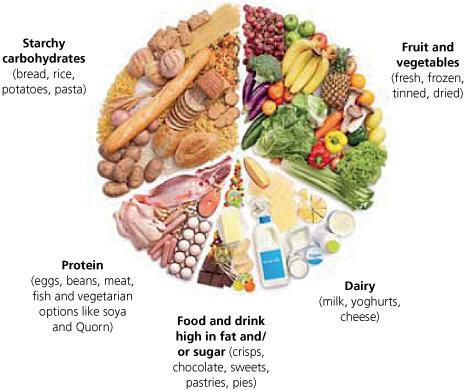
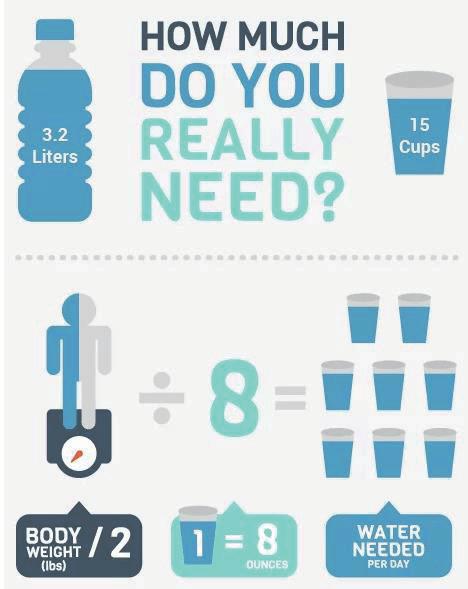
Healthy Diet and Exercise
What does 1 portion of your 5 a day look like?
• 80g of fresh, canned or frozen fruit and vegetables • 30g of dried fruit which should be kept to mealtimes • 150ml glass of fruit juice or smoothie but do not have more than 1 portion a day as these drinks are sugary and can damage teeth • Just 1 apple, banana, pear or similar sized fruit is 1 portion each. • A slice of pineapple or melon is also 1 portion, 3 heaped tablespoons of vegetables is another
How much exercise should you do?
Children - 5-12 years - 60 minutes
of moderate to vigorous intensity physical activity every day
Adult - 18-64 years - 60 minutes
Young People 13-17 years 60 minutes
of moderate to vigorous intensity physical activity every day
Jogging or running Racewalking Hiking uphill Cycling more than 10 miles per hour or steeply uphill Swimming fast or lap swimming Aerobic dancing, fast dancing, step aerobics Singles tennis
Short term: • Stress • Tiredness • Limit capacity to work
Impacts of poor Nutrition
150 to 300 minutes 75 to 150 minutes
(2½ to 5 hours) of moderate intensity OR (1¼ to 2½ hours) of vigorous intensity physical activity physical activity
or an equivalent combination of both moderate and vigorous activities, each week
Heavy gardening with digging, hoeing, shovelling heavy snow, moving or pushing heavy objects, carrying loads of 50 pounds on level ground or 25 pounds or more upstairs. Martial arts Playing sports with lots of running such as basketball, hockey, soccer Singles tennis Court sports such as handball, racquetball, squash
Long term it can contribute to the risk of developing some illnesses and other health problems such as:
Being overweight or obese
Tooth decay
High blood pressure
High cholesterol
Heart disease and stroke Type 2 diabetes Osteoporosis Some cancers Depression Eating disorders
Parents and trusted family / School Staff and Wellbeing Team NHS Eat Well: www.nhs.uk/live-well/eat well/ British Nutrition Foundation: www.nutrition.org.uk/healthyliving/lifestages/teenagers.html Kids Health: www.kidshealth.org/en/teens/dieting.html
Define: Sleep Disorders
These are medical conditions which affect our sleep. They can only be diagnosed by a Doctor and can require medicinal intervention.
Define: REM Sleep
A kind of sleep that occurs at intervals during the night and is characterized by rapid eye movements, more dreaming and bodily movement, and faster pulse and breathing.
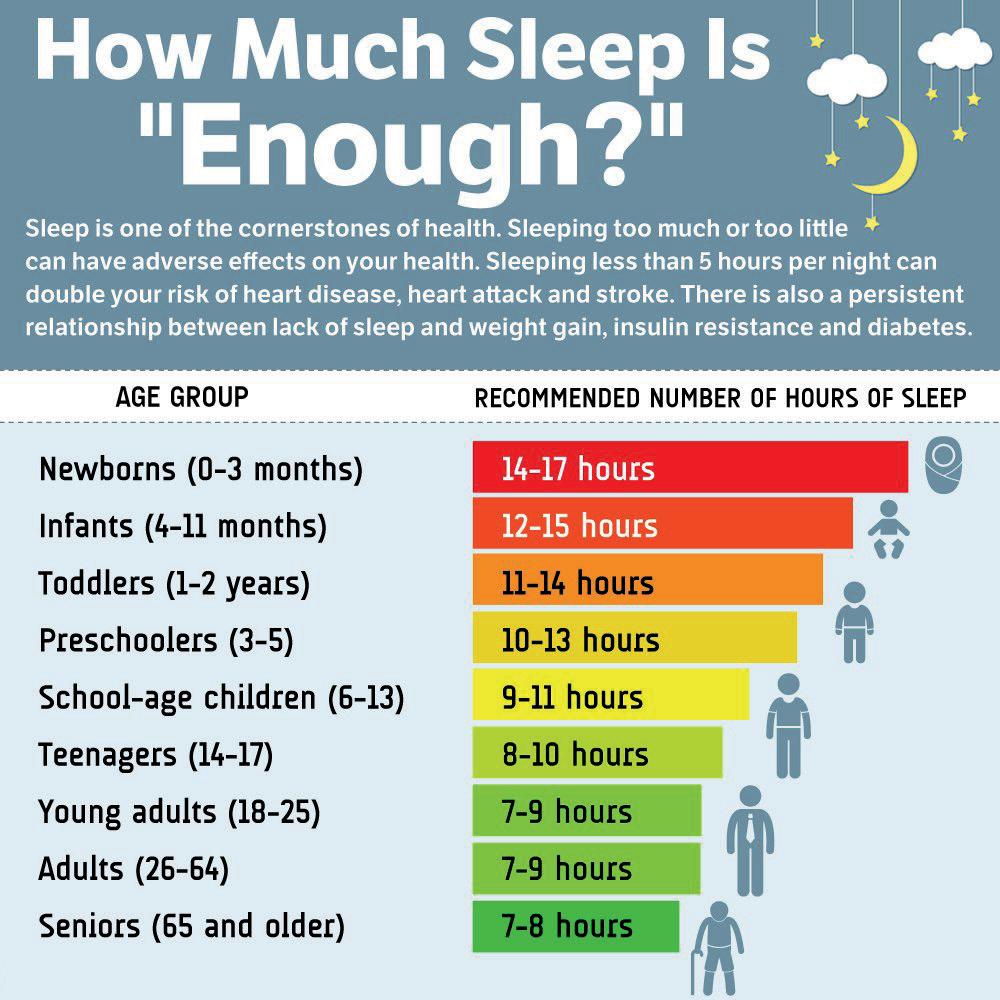
Define: Sleep Apnoea
Sleep apnea occurs when the upper airway becomes completely or partially blocked, interrupting regular breathing for short periods of time which then wakes you up.
Define: Insomnia
Trouble falling asleep or may wake up frequently during the night or early in the morning. Acute Insomnia is when this occurs infrequently. Chronic is when it occurs regularly.
REM Sleep Dreaming and movement
20%
Stage 1 Light sleep, easily awakened
10%
Sleep Cycle
Define: Sleep Deprivation
Sleep deprivation means you’re not getting enough sleep. This can be caused intentionally or not. It can be either chronic or acute and may vary widely in severity.
Stage 4 Deep sleep, difficult to wake up 10%
Stage 2 Brain waves slowing down 50%
Stage 3 Delta waves appear 10%
What can cause problems with our sleep?
Medical Issues
They are 89 recognised sleep disorders and the most common are Insomnia, Sleep apnoea, Restless limb syndrome.
Hunger
It is not recommended to eat a big meal before bedtime, a small bedtime snack helpful. If you go to bed hungry, you’re likely to wake up with hunger pangs.
Technology
The blue light emitted by screens restrain the production of melatonin, the hormone that controls your sleep/wake cycle or circadian rhythm. Reducing melatonin makes it harder to fall and stay asleep.
Stress
causes hyperarousal, which can upset the balance between sleep and wakefulness.
Mental Health Issues
Mental health issues can have a variety of impacts on sleep, such as anxiety making it hard to settle due to racing thoughts, PTSD can lead to nightmares and night terrors, depression can lead to over sleeping.
Your Bed
Past research shows that sleeping on an uncomfortable mattress can rob you of up to an hour’s vital, restful sleep.
Clutter and Messy Rooms
A cluttered bedroom makes for a cluttered mind. Don’t use it as a dumping ground for the rest of the house. Your bedroom should be a sanctuary, somewhere you can go to turn off and relax.
Napping and Lie Ins:
Trying to make up for lack of sleep with extra time in bed the following morning, or even a few days later, throws off your internal body clock. Naps of under 30 minutes can be refreshing any longer throws out your body clock.
Consequences of Sleep Deprivation
Emotional effects
• Irritability • Mood Swings • Fatigue / Tiredness • Lack of Motivation • Depression
Physical effects
• High Blood Pressure • Reduced Sex Drive • Lower Immune system • Disrupt hormone regulation • Higher risk of type 2 diabetes
Cognitive effects
• Forgetfulness • Clumsiness • Difficulty focusing
Top Tips for a Good nights sleep
Routines set a routine which your body can recognize is a wind down for sleep. Tech free bedrooms stop using technology such as tablets and phones 2 hours before bed or use a blue light filter. Clutter free bedrooms Keeping your bedroom clutter free and tidy and help make the room feel calmer and more relaxing. Reduce stimulant food intake foods and drinks which contain a lot of sugar and caffeine can impact your sleep so try not to consume too much after 3pm. Temperature the suggested bedroom temperature should be around 18 degrees Celsius.
Social media sites or apps used by children (12-15) in the UK in 2018
Top tips for staying safe on Social media
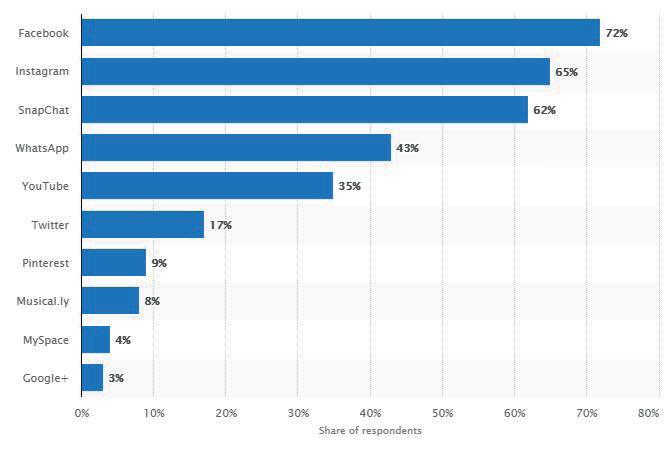
Use a strong password. The longer it is, the more secure it will be.
Use a different password for each of your social media accounts.
If you have social media apps on your phone, be sure to password protect your device.
Be selective with friend requests. If you don’t know the person, don’t accept their request. It could be a fake account.
Click links with caution. Social media accounts are regularly hacked.
Be careful about what you share. Don’t reveal sensitive personal information i.e. : home address, financial information, phone number.
Become familiar with the privacy policies of the social media channels you use and customize your privacy settings to control who sees what.
Remember to log off when you’re done.
Define: Social Media
Websites and applications that enable users to create and share content or to participate in social networking.
Define: WhatsApp
WhatsApp is a messenger app for smartphones. WhatsApp uses the internet to send messages, images, audio or video. The service is very similar to text messaging services, however, because WhatsApp uses the internet to send messages, the cost of using WhatsApp is significantly less than texting.
Define: YouTube
YouTube is a video sharing service where users can watch, like, share, comment and upload their own videos. Users can search for and watch videos, Create a personal YouTube channel, Upload videos to your channel, Like/Comment/share other YouTube videos, Users can subscribe/follow other YouTube channels and users, Create playlists to organize videos and group videos together.
Define: Twitter
Twitter is known as a micro blogging site. Blogging has been around for some time. Usually blogging consists of people setting up basic websites where they write about whatever they want, whether it be politics, sport, cooking, fashion etc. Posting a message is known as a tweet. People make connections by following other people’s twitter feeds. Once you click follow, anything that person or organisation says will appear on your timeline.
Age restrictions on Social Media
These are in the websites terms and conditions and are not legal restrictions.
Define: TBH
Short for To Be Honest is a polling app that lets your friends answer questions anonymously. Essentially it is a big popularity contest, where people received “gems” when they are picked in a poll.
Define: Facebook
Facebook is a website which allows users, who sign up for free profiles, to connect with friends, work colleagues or people they don’t know, online. It allows users to share pictures, music,videos, and articles, as well as their own thoughts and opinions with however many people they like.
Define: Snapchat
Snapchat is a mobile messaging application used to share photos, videos, text, and drawings. It’s free to download the app and free to send messages using it.
Define: Instagram
At its most basic, Instagram is a social networking app which allows its users to share pictures and videos with their friends. Once a user snaps a picture, Instagram filters of which there are dozens can transform images in a manner reminiscent of old fashioned Polaroid prints.
Define: TikTok (formally Musical.ly)
TikTok is an app for creating, sharing and discovering short music videos (15 think Karaoke for the digital age. It used by young people as an outlet to express themselves through singing, dancing, comedy, and lip syncing.
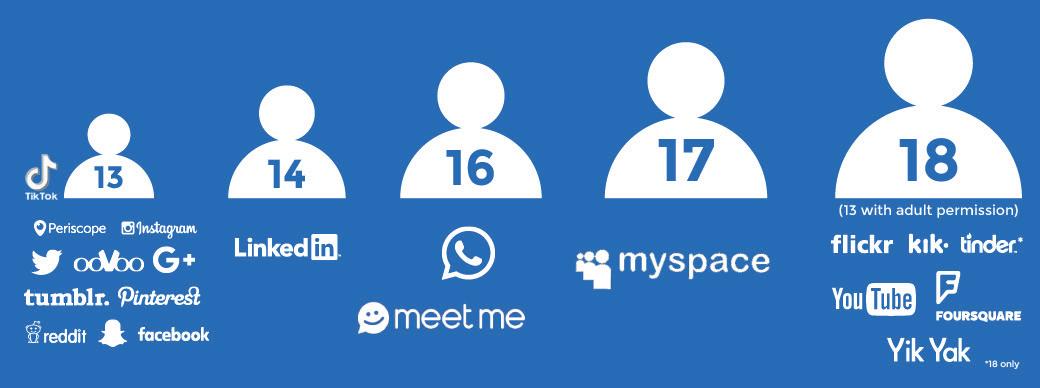
Define: Stress
A state of mental or emotional strain or tension resulting from adverse or demanding circumstances.
anxiety most people experience.
Define: Chronic Stress
disturbed sleep or appetite, low energy, and poor
The response to emotional pressure suffered for a prolonged period of time in which an individual perceives they have little or no control.
Define: Social Anxiety Disorder
Also called social phobia, is intense anxiety or fear of being judged, negatively evaluated, or rejected
Define: General Anxiety Disorder
A condition characterized by 6 months or more of chronic, exaggerated worry and tension that is unfounded or much more severe than the normal
Define: Depression
People experience low mood, loss of interest or pleasure, feelings of guilt or low self-worth, in a social or performance situation.
concentration.
Some stress is good as it can motivate people however too much can be detrimental, especially if over a long period of time.
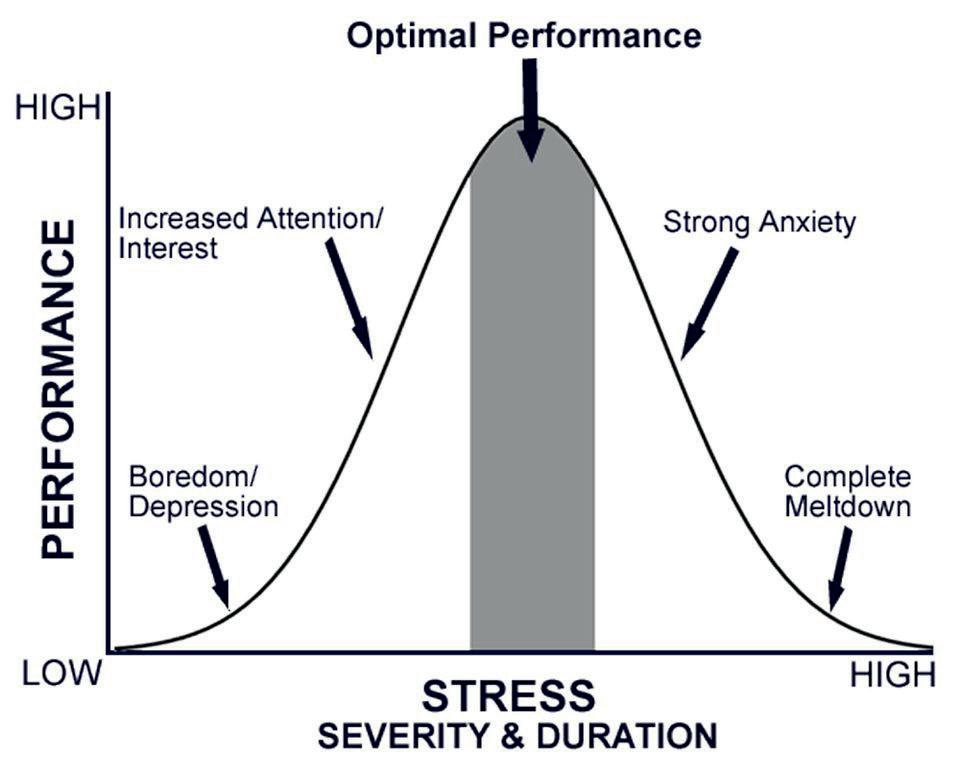
Symptoms of Chronic Stress
Chronic stress affects the whole body. It can have several physical or psychological symptoms, which can make functioning on a daily basis more challenging. The type and severity of symptoms vary considerably from person to person. Signs and symptoms of chronic stress can include:
Irritability, which can be extreme Fatigue Headaches Difficulty concentrating, Rapid, disorganized thoughts Difficulty sleeping / insomnia Digestive problems and changes in appetite Feeling helpless A perceived loss of control Low self esteem Loss of sexual desire
Nervousness Frequent infections or illnesses
Anxiety Disorders
Anxiety is an evolutionary and survival mechanism which is often linked to the flight or fight response. The brain responds to a perceived threat or danger by releasing stress hormones such as adrenaline and cortisol which cause the physical symptoms of anxiety. Once the threatening situation has stopped, the body will usually return to normal.
But if someone has an anxiety disorder these feelings of fear and danger can be ongoing and interrupt their daily routine long after the threat has gone. They can make them feel like things are worse than they actually are. General Anxiety Disorder is a long term condition that causes a person to feel anxious about a wide range of situations and issues, rather than a specific event. People with GAD feel anxious most days and often struggle to remember the last time they felt relaxed. As soon as 1 anxious thought is resolved, another may appear about a different issue.
Social Anxiety Disorder, also called social phobia, is a long lasting and overwhelming fear of social situations. Social Anxiety is more than shyness. It’s an intense fear that does not go away and affects everyday activities, self confidence, relationships and work or school life.
Symptoms of General Anxiety Disorder
Mental symptoms of anxiety can include: • Racing thoughts • Uncontrollable over thinking • Difficulties concentrating • Feelings of dread, panic or
‘impending • Feeling irritable • Heightened alertness • Problems with sleep • Changes in appetite • Wanting to escape from the situation you are in • Feeling disconnected from yourself and the world Physical symptoms of anxiety can include: • Sweating • Heavy and fast breathing • Hot flushes or blushing • Dry mouth • Shaking • Hair loss • Fast heartbeat • Extreme tiredness or lack of energy • Dizziness and fainting, and
Stomach aches and sickness.
Treatments for Chronic Stress and Anxiety • Therapy and counselling •
Medications
Things to Remember
• Everyone experiences stress and anxiety at points in their lives.
Only a doctor or mental health professional can diagnose chronic stress or an anxiety disorder. Self Care including mindfulness, meditation and journaling (keeping a diary). Alternative therapies such as acupuncture.
There are treatments available and coping mechanisms. Having a stress or anxiety disorder is not a sign of weakness and is more common than people think.
More Information & Support
Parents and trusted family / School Staff and Wellbeing Team / GP or Practice Nurse. MIND www.mind.org.uk / Help line 0300 123 3393 open 9am to 7pm, Monday to Friday or Text: 86463 Young Minds www.youngminds.org.uk / Text: 85258 or Parents Helpline: 0808 802 5544 Stem4 www.stem4.org.uk
Define: Mental Wellbeing
Mental wellbeing describes your mental state how you are feeling and how well you can cope with day to day life. Our mental wellbeing is dynamic. It can change from moment to moment, day to day, month to month or year to year.
Define: Emotional Literacy
The ability to understand and express feelings. Emotional Literacy involves having self awareness and recognition of one’s own feelings and knowing how to manage them.
Define: Primary Emotions
There are 5 primary emotions but over 600 words in the English language for different emotions. The primary emotion groups are: 1. Joy, 2. Anger, 3. Sadness, 4. Disgust, 5. Fear
Define: Mental Illness
Mental illnesses comprise of a broad range of problems, with different symptoms. However, they are generally characterized by some combination of abnormal thoughts, emotions, behaviour and relationships with others.
They can only be diagnosed by a Doctor or Mental Health Professional
Everyone is different and what affects someone’s mental wellbeing won’t necessarily affect others in the same way. Everyone will have times when they have low mental wellbeing, where they feel stressed, upset or find it difficult to cope. Common life events that can affect your mental wellbeing include: • Loss or bereavement • Loneliness • Relationship problems • Issues at work • Worry about money However there are times when there is no discernable reason for the way a person feels which can be extremely frustrating.
Signs of good mental wellbeing
• Feeling relatively confident in yourself and have positive self esteem
Feeling and express a range of emotions
Building and maintaining good relationships with others
Feel engaged with the world around you
Live and work productively
Cope with the stresses of daily life
Adapt and manage in times of change and

Things that can affect our mental wellbeing
uncertainty There are some factors that may make people more vulnerable to experiencing a period of poor mental wellbeing. These may have happened in the past or might still be happening now:
• Childhood abuse, trauma, violence or neglect • Social isolation or discrimination • Homelessness or poor housing • A long term physical health condition • Social disadvantage, poverty or debt • Unemployment • Caring for a family member or friend • Significant trauma as an adult, such as military combat, being involved in a serious accident or violent crime
Signs of poor mental wellbeing • Erratic changes in mood and behaviour
Distancing from friends and family
Loss of interest in things that they used to be interested in.
Excessive sleeping or not sleeping.
Increased alcohol consumption.
Poor concentration and being easily Finding it hard to make decisions
Feeling overwhelmed by things & tearfulness
Finding it difficult to control your emotions distracted
Irritability and short temper or aggression
The Importance of Self Care
At times people may feel guilty for spending time on themselves. But it’s essential for mental wellbeing and can help people to be more resilient. Some self care techniques include
• Mindfulness
• Doing something you enjoy
• Relaxation techniques
• Get outdoors and fresh air
• Exercise If someone is living with a mental health problem, taking steps to look after their mental health can help you improve your wellbeing.
Strategies can include:
• Talking to someone
• Knowing triggers and warning signs
• Keeping a mood diary
• Building your self esteem.
The Importance of Positive Relationships
Connecting with others can help us to feel a greater sense of belonging and can help to challenge feelings of loneliness
Make time for the people you love. Keeping regular contact with friends and family, whether it’s face to face, on the phone or by text, can strengthen your relationships.
Join a group. Think of the things you like to do, such as drawing, gardening or sport and look for local groups. Meeting others with a shared interest can increase your confidence and build your support network.
Talk about the way you feel. Opening up to a trusted friend or family member can help you to feel listened to and supported. Just acknowledging your feelings by saying them out loud can help.
Use peer support. If you’re finding things difficult, talking to people who have similar feelings or experiences can help you to feel accepted.
More Information & Support
Parents and trusted family / School Staff and Wellbeing Team / Your Doctor or Practice Nurse MIND www.mind.org.uk / Help line 0300 123 3393 open 9am to 7pm, Monday to Friday or Text: 86463 Young Minds www.youngminds.org.uk / Text: 85258 or Parents Helpline: 0808 802 5544 Stem4 www.stem4.org.uk
HOW TO SELF TEST WITH KNOWLEDGE ORGANISERS
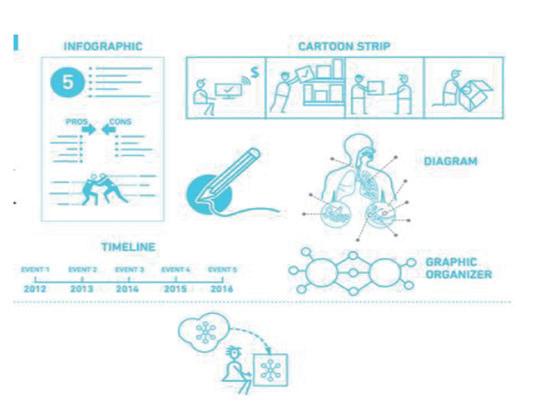
Try to come up with different ways to represent the information visually, from your knowledge organiser for example: an infographic, a timeline, a cartoon strip, a Venn diagram, or a diagram of parts that work together. Work your way up from drawing what you know from memory. By presenting your work in a different format the information is more likely to transfer to your long-term memory.
HOW TO USE GRAPHIC ORGANISERS
Look, Cover, Write, Check

This strategy is commonly used by primary schools, it is a proven effective method of practising the spelling of key terminology found in your knowledge organiser. Start by carefully looking at the keyword you need to spell, cover it up, write it down, check it against your knowledge organiser and correct it if necessary. Make sure to practise the words you get incorrect several times as practice makes perfect!
USING ‘LOOK, COVER, WRITE, CHECK’
Keyword Mnemonics

Make up a sentence where each word begins with the same letter as the word you need to remember. e.g: Colours of the rainbow: ‘Richard Of York Gave Battle In Vain’ (Red, Orange, Yellow, Green, Blue, Indigo, Violet) e.g: The order of the planets: ‘My Very Enthusiastic Mother Just Served Us Noodles’ (Mercury, Venus, Earth, Mars, Jupiter, Saturn, Uranus, Neptune)
HOW TO USE MNEMONICS FOR REVISION
9
Academies Trust
Education House, Spawd Bone Lane, Knottingley, WF11 OEP T: 0345 196 0033 I info@deltatrust.org.uk I www.deltatrust.org.uk

